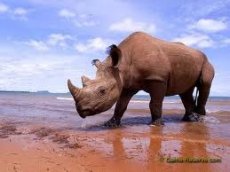New publications
Biologists create stem cell bank of endangered animal species
Last reviewed: 30.06.2025

All iLive content is medically reviewed or fact checked to ensure as much factual accuracy as possible.
We have strict sourcing guidelines and only link to reputable media sites, academic research institutions and, whenever possible, medically peer reviewed studies. Note that the numbers in parentheses ([1], [2], etc.) are clickable links to these studies.
If you feel that any of our content is inaccurate, out-of-date, or otherwise questionable, please select it and press Ctrl + Enter.

Biologists are creating a bank of stem cells from endangered animal species. The "contributions" will be useful for improving the health of endangered populations, increasing genetic diversity and fertilization, if there are no males left in the population.
Protection of endangered species
Scientists are ready to do a lot to preserve biodiversity. For example, in order to save Tasmanian devils, which are disappearing due to an incurable cancer disease, scientists analyzed the genomes of one healthy and one sick animal.
And in the US, dogs work in the same team with zoologists and ecologists. Specially trained dogs do not chase prey, but find traces of endangered species and help scientists mark the coordinates of places where skunks and weasels have passed.
Other zoologists are creating a concept of using the image of chimpanzees in the media. They are sure that the real image of chimpanzees worsens the already deplorable state of the endangered species.
Researchers from Californian research centers have approached endangered species from a different angle. Inbar Fridrich Ben-Nun from The Scripps Research Institute and his colleagues decided to create a bank of induced stem cells. The cells could be used to reproduce and improve the health of the population.
“Some endangered species have populations so small that they cannot provide the necessary level of genetic diversity,” the scientists write in a paper published today in Nature Methods. “Moreover, small populations often suffer from complex metabolic and genetic defects.”
Genetic stash
Induced pluripotent stem cells (iPSCs) are stem cells obtained from adult somatic cells. For example, from skin cells. They, like embryonic stem cells, retain genetic information about all the characteristics of the animal.
As the cells differentiate, this information is gradually "archived". And this is understandable, why, for example, does the eye need information about the heel? In this sense, the stem cells of endangered animals are a "stash" of genetic material, preserved in full.
Technologies for reprogramming somatic cells into stem cells have been tested on human, rodent and monkey tissues. Full-fledged sperm, teeth, liver and other organs have already appeared from "skin" stem cells. Even normal mice were born from iPSCs, which produced full-fledged offspring.
Inbar Friedrich Wen-Nan and colleagues were the first to adapt the technology to other animal species. They created induced stem cells from a type of monkey (the drill, Mandrillus leucophaeus) and the largest rhinoceros (the white rhinoceros, Ceratotherium simu cottoni).
Drill and the Rhino
"Drills are critically endangered. They are found in the wild in Nigeria, Cameroon, and Equatorial Guinea," the scientists write, explaining the relevance of their work. "The numbers of animals are steadily declining due to illegal hunting and the constant destruction of their habitat." Other scientists who recently went on a photo hunt in the tropics agree with Wen-Nan's team.
"Zoologists are trying to preserve these primates, but a limited number of animals are used for their reproduction, which increases the risk of genetic diseases," the scientists continue. "Moreover, these primates often suffer from diabetes." The scientists are confident that the obtained iPSCs can be used to treat individual individuals of the endangered primate species. In some cases, iPSCs will also be useful for reproductive medicine - to increase the birth rate in zoos.
Scientists point out that white rhinos have a hard time. Back in 1960, there were 2,230 Ceratotherium simu cottoni in the wild. Now there are only seven, four of which are sexually mature. Such a small population cannot provide the necessary level of genetic diversity: the offspring of these animals will most likely suffer from genetic diseases. Moreover, scientists write that the remaining rhinos do not interbreed with each other. Therefore, perhaps, the obtained iPSCs are the last chance to save rhinos. From stem cells, sperm can be made and fertilized with a female rhino.
Scientists are confident that the zoological stem cell bank will soon contain “contributions” from other endangered animal species and populations in which there are no males left.

 [
[